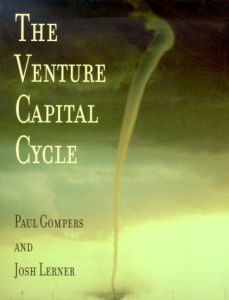Join getAbstract to access the summary!

Join getAbstract to access the summary!
Paul Gompers and Josh Lerner
The Venture Capital Cycle
MIT Press, 1999
What's inside?
You’re still running your business out of the carport, and you’re financially tapped out. It’s time to read The Venture Capital Cycle.
Recommendation
The Venture Capital Cycle is a thorough overview of the venture capital market that will be edifying to those who know little about the mysterious methods of private equity financiers, but self-evident to those with a background in corporate finance. Readers who have worked in or studied finance already are familiar with the tidal cycles that govern the flow of capital into early-stage companies, as well as the process through which money moves from institutions and individuals to fledgling enterprises. But getAbstract strongly recommends that entrepreneurs read this book, which provides an exhaustive tour that will answer many - if not all - of your questions about where venture capital comes from, how you can get a hold of some, and how your life and business will change after you do. And if, along the way, you think that the authors sound too much like professors with their dense, academic prose, you’re right.
Summary
About the Authors
Paul Gompers is an associate professor of business administration at Harvard Business School, where Josh Lerner is a professor of business administration. Both are faculty research fellows at the National Bureau of Economic Research.



















Comment on this summary